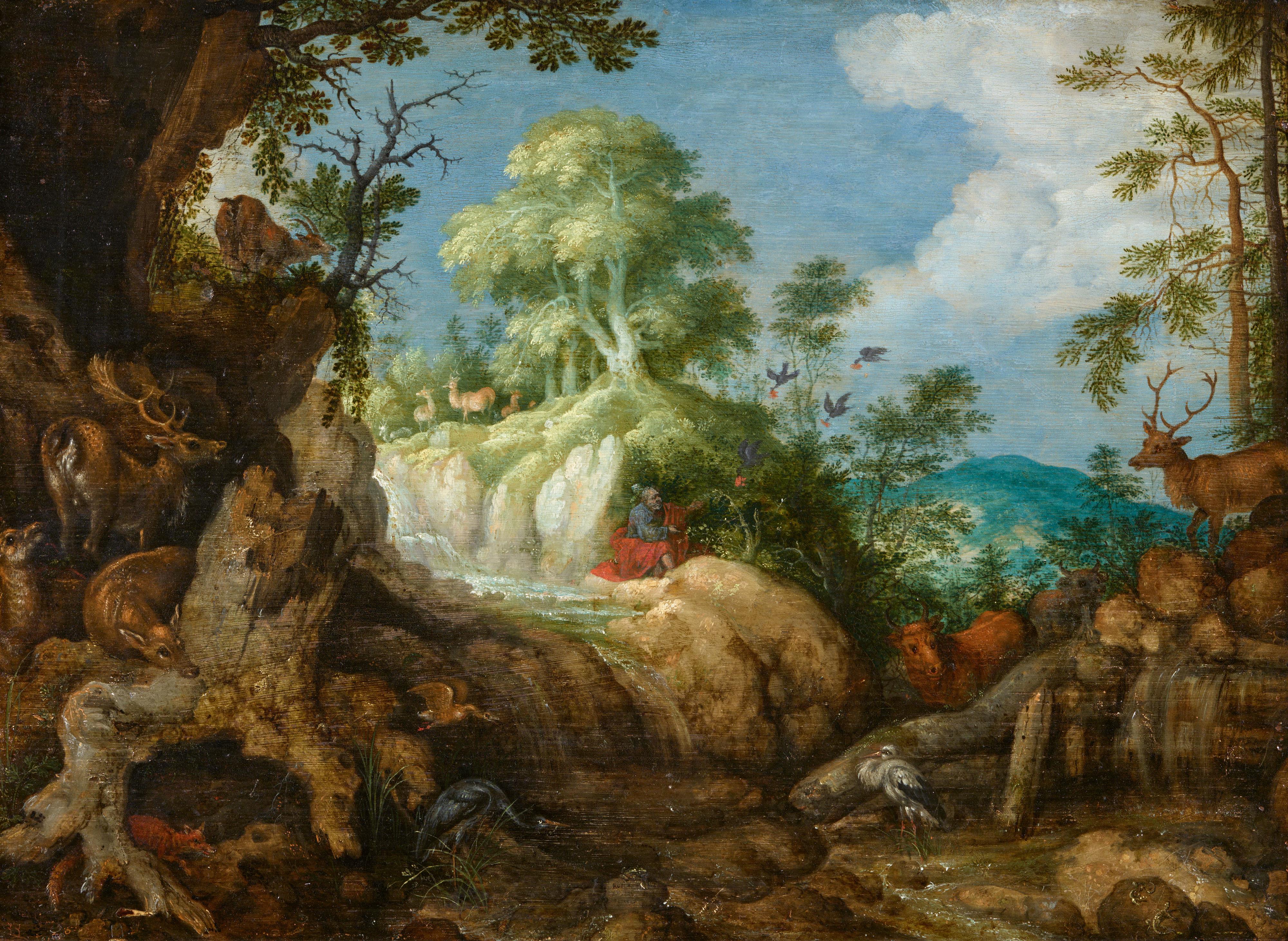Roelant Savery
Landscape with Elijah Fed by Ravens
Oil on panel. 35.5 x 49.5 cm.
Signed and dated lower centre: ROELANT/SAVERY/FE 1601.
The Book of Kings (I,17) tells the story of the prophet Elijah who, at God's command, went to the banks of the river Krit to seek protection from Ahab. Elijah was to drink the water of the river and ravens were to provide him with bread and meat in the morning and evening.
Roleant Savery uses the Old Testament narrative as the basis for a landscape rich in flora and fauna in a myriad of forms and colours. The three-colour palette of brown-green-blue that was customarily used to separate the pictorial planes is almost cancelled out by the abundance that presents itself to the viewer's eye. In the middle ground, in the centre of the picture, one sees the prophet sitting on the bank of the river, as the ravens circle above him with loaves of bread in their beaks. The warm rays of morning light fall from beyond the mountain and illuminate the spot on which the prophet has sat down.
In contrast to the brightly lit middle ground, the foreground is shrouded in darkness, dominated by gnarled, twisted tree stumps and roots populated by all kinds of animals - deer, bulls, foxes, and birds. They seem to hide from the prophet in the shadows of the trees and rocks, peeking out at him with a mixture of suspicion and curiousity from all sides, directing the viewer's gaze towards Elijah along with their own.
The rendering of nature "naar het leven (after life)", the abundance of forms and colours, and the virtuoso mastery of pictorial space were what distinguished the landscapes of Roelant Savery, who was one of the leading exponents of this genre in Europe around 1600. Savery's high reputation is reflected in his appointment as court painter to Emperor Rudolph II in Prague in 1604, shortly after this painting was created.
Provenance
In a private collection in Westphalia for several generations (label on the reverse).

